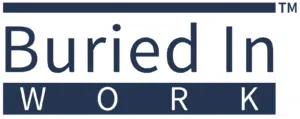Share This Checklist
1. Understand Probate Basics
Knowing how probate works helps you take steps to avoid it.
1.1 What is probate?
Probate is the court-supervised process of distributing a deceased person’s estate.
How to do this:
- Learn that probate is required for assets that do not have a direct beneficiary or co-owner.
- Understand that probate can take months or even years, depending on the complexity of the estate.
- Recognize that probate fees can be costly and reduce the value of the estate.
Why it matters:
- Helps you plan to keep key assets out of probate.
- Allows beneficiaries to access their inheritance faster.
2. Review Estate Planning Documents
A well-organized estate plan can reduce the need for probate.
2.1 Ensure you have a valid will
A will alone does not avoid probate, but it directs how your estate is distributed.
How to do this:
- Make sure your will is legally valid, signed, and up to date.
- Clearly name beneficiaries and specify how assets should be divided.
- Store your will in a secure location and inform your executor where to find it.
Why it matters:
- Avoids confusion and disputes over your estate.
- Ensures your assets are distributed according to your wishes.
3. Consider a Revocable Living Trust
A trust allows assets to bypass probate and be distributed privately.
3.1 Create a revocable living trust
A trust legally holds assets for beneficiaries and avoids probate.
How to do this:
- Work with an estate planning attorney to draft a revocable living trust.
- Name a trustee to manage the assets after your passing.
- Ensure the trust aligns with your overall estate plan.
Why it matters:
- Keeps your estate private and out of court.
- Allows assets to be distributed immediately without probate delays.
3.2 Fund your trust properly
A trust only works if assets are legally transferred into it.
How to do this:
- Retitle real estate, financial accounts, and valuable assets in the trust’s name.
- Update deeds, bank accounts, and investment accounts.
- Verify that all intended assets are covered by the trust.
Why it matters:
- Prevents assets from accidentally going through probate.
- Ensures your trust functions as intended.
4. Utilize Joint Ownership Strategies
Certain types of joint ownership allow assets to transfer directly without probate.
4.1 Use Joint Tenancy with Right of Survivorship
Joint ownership ensures assets automatically pass to the surviving owner.
How to do this:
- Title real estate, vehicles, and financial accounts as joint tenants with right of survivorship (JTWROS).
- Ensure both owners are aware of the arrangement and documentation is legally binding.
Why it matters:
- Assets automatically transfer to the joint owner without probate.
- Provides a simple way for a spouse or family member to inherit property.
4.2 Consider Tenancy by the Entirety (for married couples)
This is a form of joint ownership specifically for spouses.
How to do this:
- Confirm your state allows tenancy by the entirety.
- Retitle property in both spouses’ names under this designation.
Why it matters:
- Offers added legal protections against creditors.
- Ensures assets transfer to the surviving spouse without probate.
5. Designate Beneficiaries on Key Accounts
Naming beneficiaries allows accounts to transfer outside of probate.
5.1 Use Payable-on-Death (POD) and Transfer-on-Death (TOD) accounts
These designations allow assets to transfer directly to beneficiaries.
How to do this:
- Update bank accounts with Payable-on-Death (POD) beneficiaries.
- Add Transfer-on-Death (TOD) designations to brokerage and investment accounts.
Why it matters:
- Allows financial assets to be inherited immediately without court involvement.
- Keeps funds accessible for loved ones when they need them most.
5.2 Ensure retirement accounts and life insurance policies have up-to-date beneficiaries
Retirement plans and life insurance policies do not go through probate if beneficiaries are named.
How to do this:
- Review 401(k), IRA, and pension plans to confirm correct beneficiaries.
- Update life insurance policies to reflect your current wishes.
Why it matters:
- Ensures these assets pass directly to heirs without delay.
- Avoids disputes over who should inherit financial benefits.
6. Explore Small Estate Procedures
Some states allow smaller estates to avoid probate with simplified processes.
6.1 Check if your estate qualifies for small estate procedures
Many states offer expedited probate for estates under a certain value.
How to do this:
- Research your state’s small estate limit.
- If applicable, use affidavits to transfer assets without full probate.
Why it matters:
- Reduces legal fees and court involvement.
- Allows heirs to settle the estate faster.
7. Gift Assets During Your Lifetime
Giving assets away while alive reduces what passes through probate.
7.1 Make use of tax-free gifting
The IRS allows annual tax-free gifts up to a certain limit.
How to do this:
- Gift up to $18,000 per person (as of 2024) without tax consequences.
- Consider larger gifts over time to reduce taxable estate value.
Why it matters:
- Helps distribute wealth before death while avoiding estate taxes.
- Reduces probate assets, simplifying estate settlement.
8. Regularly Review and Update Your Estate Plan
Life changes can affect your estate plan, so updates are essential.
9.1 Keep documents current
Reviewing your estate plan ensures it reflects your latest wishes.
How to do this:
- Update your will, trust, and beneficiary designations after major life events.
- Reassess estate planning documents every few years.
Why it matters:
- Prevents outdated beneficiaries or missing assets from causing probate issues.
- Ensures your estate is always in the best possible position to avoid probate.
Final Thoughts
Avoiding probate is possible with the right estate planning strategies. By using trusts, beneficiary designations, joint ownership, and small estate exemptions, you can save your loved ones time, money, and legal hassles. Regularly reviewing and updating your estate plan ensures that assets are protected and distributed according to your wishes. Taking action now can prevent unnecessary probate delays and ensure a smoother transition for your heirs.
Related Content

